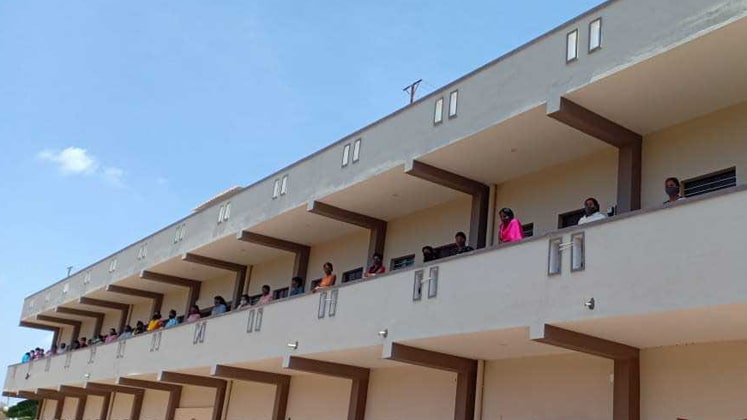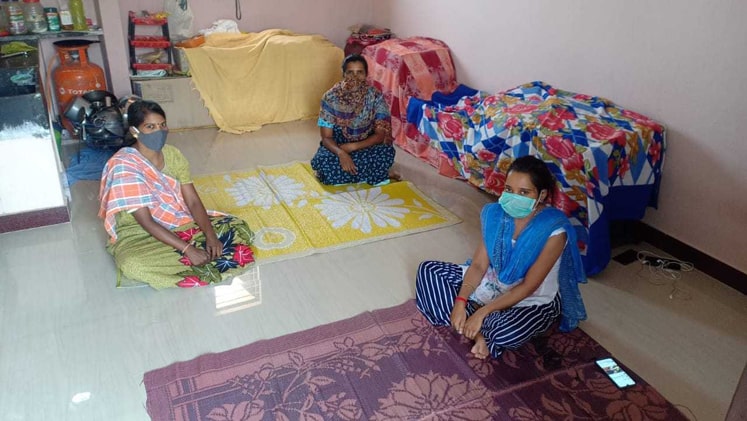
During the last few days, the mainstream media shared some news regarding the labour scarcity in the garment manufacturing industry, especially in apparel manufacturing hubs of North India, Delhi-NCR, Jaipur and Ludhiana.
Trade associations in these hubs have also requested their Governments in this regard, and the good thing is that the Governments, especially in Uttar Pradesh and Rajasthan, have come forward to support the industry. So, one can expect the labour availability to increase and workflow to become smooth in the next few weeks. But is it so easy? Especially looking at their negative experience of going back to their hometowns and villages just a month back! There are many other reasons also.
There are fewer chances that workers will be back to their previous jobs, as the pandemic continues to grow at a rapid rate and workers don’t want to take any chance. Majority of workers strongly feel, and rightly so, that as compared to their villages, there are more chances to get infected with coronavirus in a metro city.
A large chunk of workers is also getting work under Mahatma Gandhi National Rural Employment Guarantee Act, 2005 (MGNREGA) in their villages and they are satisfied with the same.
Bihar, from where the majority of migrant workers belong, has an assembly election just 3 months later in October 2020 which is another reason to keep workers busy there in the political activities.
Diwali falls in mid-November, so the majority of workers are expected to come back not before 2021 or at least December 2020.
On the other side, there are chances that few workers may come back in the next few weeks or a month or two, as garment manufacturers and labour contractors continue to lure workers by offering more wages, free transport from their respective states to the work place, full-year work assurance and a comfortable working environment (not putting too much pressure like earlier).
But what about the most important aspect – their safety? Also, do the factories have a long-term planning to retain workers with them? Need not to say that majority of workers, especially in Delhi-NCR, are forced to live in pathetic conditions, be it a common toilet for dozens of workers or their struggle to reach factories every day in public transport, and high cost of living.

There are no sufficient healthcare services in Delhi-NCR in case a worker gets infected with coronavirus, or any other health issue, for that matter. So, what is the solution, and a viable one? Another important fact to underline here is – that viable solution should not take much time, as India has already lost overseas orders in the last week of April and the first week of May when exporters couldn’t commit a fixed delivery schedule due to no clarity on factories resuming operations and availability of workers.
Now that the workers are coming back, factories must provide them dormitory or hostel facilities along with canteen or proper food services. There are many nearby villages which can be utilised for this purpose, and every stakeholder of the industry, the Government and the society have to come forward with aggressive planning as well as execution.
The fact of the matter is there is hardly any factory offering such facilities in Delhi-NCR and even in Jaipur or Ludhiana (except few large groups like Vardhman Group). But to ensure their safety and comfort, this is the only way. As far as cost is concerned, it can be done on the sharing basis, wherein both the company and workers contribute. No doubt, this practice could not take place so far, as cost of land and rent of rooms are very high in North India, and there was no worker shortage in recent years, but to make sure that a factory has enough workforce as per its requirements, one has to do this now.
In discussion with Apparel Resources, exporters from Delhi-NCR having turnover of more than Rs. 100 and 200 crore clearly said that this is only possible with the Government support, be it in the form of subsidy or using various schemes like Pradhan Mantri Awas Yojana (Urban) Mission (an initiative by the Government of India in which affordable housing will be provided to the urban poor).
Some of the exporters who have factories in remote areas are planning to increase production there rather than putting efforts to bring labour to their units in metro cities. Matrix Clothing, Gurgaon, is increasing its production in Ranchi by doing a double shift. Gautam Nair, CMD of the company, believes that this is a better option, as arranging for living facilities in Gurgaon for workers is not viable from the cost point of view.
But there are very few companies that can migrate production in such areas, not the majority of the industry.
Interestingly, Noida – where the State Government is arranging 65,000 workers for garment industry on an immediate basis – has already started moving in this direction with a long-term solution. Lalit Thukral, President, Noida Apparel Export Cluster (NAEC), told Apparel Resources, “Our project of an apparel park will have dormitories/hostels for workers. But it will take 2 years, so for an immediate solution, we are requesting the Government to give us ready rooms wherever available in nearby areas.” He further added that some schemes of the State Government like Kashiram Garib Aawas Yojana, etc. can also be fruitful in this regard.
Yes, arranging dormitories and allied facilities will increase the cost for the industry, but if the industry must continue to work, there is no other way but to support the workers. Ludhiana does have the advantage of nearby villages. Members of Parliament (MPs) can also be instrumental in this entire exercise.
Indeed, it is time for unprecedented solutions, and a part of the industry better understands this and is following too. Has anyone ever expected workers to get flight tickets offered to come back from their states to join work? Now medium-sized companies from Ludhiana and Mumbai have offered the same to few of their workers. It is the need of the hour that the industry takes more such steps to provide long-term solutions, no matter what it costs!






